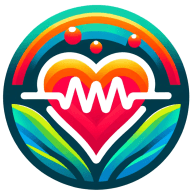What Wearable Technology is Incorporated into Training?
Discover the cutting-edge of fitness technology as this article unveils how wearable tech is revolutionizing training routines. Gain exclusive insights from industry experts who are pioneering these innovations. Learn how tracking and optimizing key health metrics can elevate workout efficiency and stress management.
- Wearable Tech Transforms Executive's Fitness Routine
- HRV Tracking Optimizes Client Stress Management
- Fitness Tracker Boosts Client's Workout Consistency
Wearable Tech Transforms Executive's Fitness Routine
One client, a busy executive, struggled with consistency in her fitness routine due to long work hours and frequent travel. Incorporating wearable technology into her training transformed her approach to wellness.
We started by using her smartwatch to track heart rate variability (HRV) and sleep patterns, helping her identify how stress and recovery impacted her performance. By monitoring daily step count and movement reminders, she became more conscious of staying active, even on packed workdays. Additionally, we set up real-time heart rate monitoring during workouts, ensuring she trained efficiently without overexertion.
The biggest breakthrough came with habit tracking--her device sent gentle nudges to stand, stretch, or breathe throughout the day. Seeing her progress visually kept her motivated, and over time, she reported better energy levels, improved focus, and reduced stress. By leveraging wearable technology, we created a personalized, data-driven approach that kept her engaged and accountable, even outside of our training sessions.

HRV Tracking Optimizes Client Stress Management
One of the most impactful ways that wearable technology has benefited my clients is the tracking of Heart Rate Variability (HRV). This metric is one of the most effective ways we have of assessing the level of stress the client is under BEFORE they start exercising.
Why is that important? Well, every time we train, we are stressing our body in a variety of ways. Most notably, we are taxing our central nervous system - especially when lifting heavy weights. As a result, over time, if we tax a client's system too much or too often, then they will slowly get depleted.
So we need to know what level of stress they are already under and tailor our approach accordingly to prevent burnout. Naturally, there are many other factors at play including work stress, relationship stress, sleep quality and diet - all of which will affect one's HRV.
In theory, we should be able to tell when we are feeling stressed but many people struggle with this so having HRV as a metric to track helps me as a Personal Trainer enormously to understand how my client is coping with the stress I am asking them to put their body under.
It also helps me to understand how they respond to exercise as everyone will have a different level of tolerance to stress.

Fitness Tracker Boosts Client's Workout Consistency
One of my clients struggled with accountability and staying consistent with their workouts. To help, we incorporated a fitness tracker into their training regimen, and it entirely changed their approach to exercise.
At first, they were skeptical, but we started with some simple goals - tracking daily steps and monitoring heart rate during workouts. Over time, they became more engaged, setting personal step goals and using the tracker's reminders to stay active throughout the day. They also loved seeing their progress in real-time, which kept them motivated.
One of the biggest benefits was using heart rate data to adjust workout intensity. They used to either push too hard and burn out or take it too easy without realizing it. Using the tracker, we fine-tuned their sessions, ensuring they trained in the right heart rate zones for their goals.


